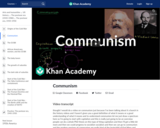
Overview of Communism and Marxist-Leninist states.
- Subject:
- History
- U.S. History
- Material Type:
- Lesson
- Provider:
- Khan Academy
- Provider Set:
- Khan Academy
- Author:
- Sal Khan
- Date Added:
- 07/15/2021

Overview of Communism and Marxist-Leninist states.
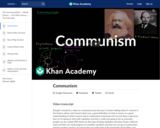
Overview of Communism and Marxist-Leninist states.

A discussion with Khan Academy World History Fellow Eman Elshaikh on the comparative roles of women in Rome and Han China (with brief discussion of women in Athens as well).
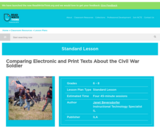
Which side will win as students investigate both sides of the battle of using print versus online text for research as they learn about the lives of Civil War soldiers?

In this video, Kim discusses how mutual misunderstandings between Europeans and Native Americans often defined the early years of interaction and trade as each group sought to make sense of the other.
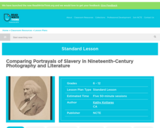
In this lesson, students analyze similarities and differences among depictions of slavery in "The Adventures of Huckleberry Finn", Frederick Douglass' "Narrative", and nineteenth century photographs of slaves. Students formulate their analysis of the role of art and fiction, as they attempt to reliably reflect social ills, in a final essay.

Similarities and differences between the Roman Empire and the "Byzantine Empire" (which considered itself the continuation of the Roman Empire).
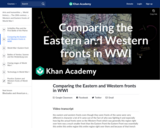
A comparison of the Eastern and Western fronts in WWI
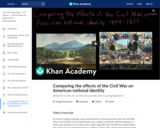
The Civil War is often considered the most transformative event in US history. But how much did it really change American national identity? In this video, Kim compares the relative significance of the effects of the Civil War on American values.
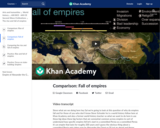
Sal and World History Fellow Steven Schroeder discuss the fall of empires, from Achaemenid Persia, the Maurya Empire in India, the Han Empire in China, and the Roman Kingdom, Republic, and Empire in the Mediterranean.
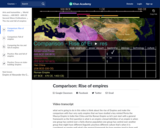
Comparing what led to the rise of Achaemenid Persia, Maurya India, Han China, and the Roman Empire.
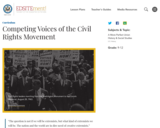
When most people think of the Civil Rights Movement in America, they think of Martin Luther King, Jr. Delivering his "I Have a Dream" speech on the steps of the Lincoln Memorial in 1963. But "the Movement" achieved its greatest results due to the competing strategies and agendas of diverse individuals.

We look at Confucianism, Daoism, and Legalism, as well as other philosophies from Warring States-era China.

The issue of slavery permeated debate in Congress from the founding of the country through the mid-nineteenth century. The failure to resolve differences between states on the issue of slavery led to the Civil War. To manage both the war effort and its consequences, Congress crafted new legislation that addressed a changing nation.
Learn more in this virtual exhibit.

Together, the U.S. House of Representatives and U.S Senate are called Congress, the legislative branch of the federal government.

When Columbus arrived in the Caribbean, he met the Taino people. In this video, Kim explores the consequences of Columbus's voyage for the Taino people, as well as the changes wrought in Europe by Spain's New World exploits.

The text of the United States Constitution translated into Spanish. The page does have advertisements as well, so it is best used as a teacher resource.

Take the Constitution quiz to find out how much you know about the Constitution of the United States of America.

A Constitution quiz for young students. Test your knowledge! This quiz covers Congress, the Judiciary, the Executive Branch, and the separation powers between these three branches of government.
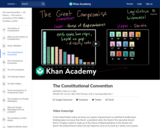
In 1787, the Framers of the US Constitution came together to create a stronger central government. In this video, Kim discusses how the Framers compromised over the plan for the legislative branch of government, combining the Virginia Plan and New Jersey Plan to form the House of Representatives and the Senate.